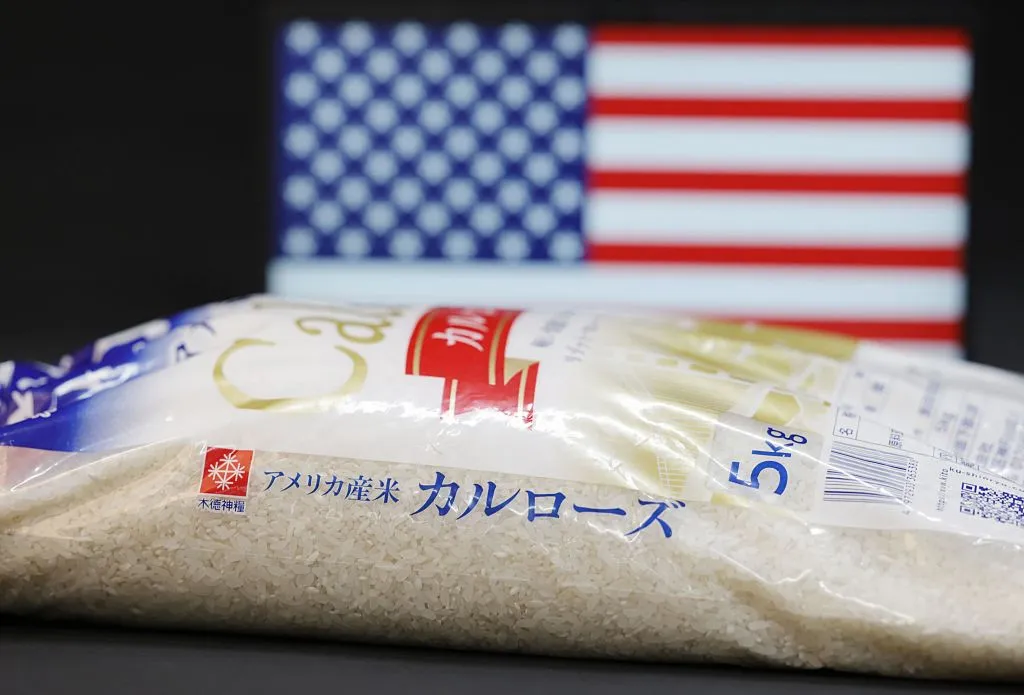Japan pushed back against a new US demand to buy more American rice, a last-minute condition that derailed this week’s negotiations and led chief trade negotiator Ryosei Akazawa to cancel a planned trip to Washington. The dispute is not only about one crop. It exposes deeper tensions around agricultural sovereignty, inflation at home, and the still-unwritten trade framework both governments are trying to finalize in the Indo-Pacific.
What changed this week
Tokyo and Washington had been working to codify a political deal struck in July. That framework focused on reducing reciprocal tariffs to 15 percent while linking the arrangement to a large Japanese investment package in the United States. But as negotiators tried to put that into binding text, Washington introduced an additional request: that Japan commit to buying more American rice.
Japanese officials objected sharply, framing it as interference in domestic affairs. Akazawa’s trip was pulled, and ministries scrambled to reassess their strategy.
Domestic politics added heat. Opposition leader Yuichiro Tamaki criticized the lack of a written agreement and warned that any new concessions on agriculture must face parliamentary scrutiny. Inside government, officials insisted that before issuing any joint statement, they want an amended US executive order that eliminates overlapping tariffs on Japanese goods and clarifies rules for autos and parts. Tokyo’s position is simple: legal clarity first, side conditions later.
Why rice is the pressure point
Rice in Japan is more than a staple food, it is a cultural symbol and a political touchstone. Since the mid-1990s, Japan has operated under a World Trade Organization quota system that allows about 770,000 metric tons of rice imports annually without tariffs. Of that, up to 100,000 tons can be sold directly to consumers as table rice. Anything beyond that faces a punitive duty of 341 yen per kilogram, effectively closing the door to private imports.
In the last fiscal year, the United States supplied nearly half of Japan’s total rice imports. When retail prices surged in 2024, Japan hit the full 100,000-ton cap for tariff-free table rice for the first time in seven years. American suppliers won more than half of those tenders. Even after the cap was filled, some firms chose to pay the steep tariff rather than leave shelves empty which is proof of how tight the market had become.
The July understanding and the new request
In July, Prime Minister Shigeru Ishiba pledged to raise volumes of US rice within the existing quota framework, while preserving Japan’s farm protections. Washington promoted that as a win, alongside broader access for American cars, trucks, and selected farm goods.
Crucially, that understanding did not involve cutting Japan’s agricultural tariffs. The late US request for a further commitment to purchase additional rice appears to contradict both the spirit and the messaging of that July deal. That is why Tokyo froze the process.
How Japan’s import system works
-
Minimum access quota: Japan guarantees imports of 682,000 metric tons annually under its WTO commitments, administered by the farm ministry.
-
SBS tenders: Up to 100,000 tons can be allocated as table rice through “Simultaneous Buy and Sell” tenders, where wholesalers and importers bid jointly. In late 2024, surging demand drove markups to their legal ceiling.
-
Tariffed imports: Once the cap is filled, private firms can still import rice but must pay the 341 yen levy. In 2024 some did, underscoring the pressure of rising prices.
This system gives Tokyo significant control over timing and volumes. Any promise to source a set amount from one country would raise political and legal problems, especially since WTO rules require non-discrimination inside the quota.
Inflation and supply pressures
Rice inflation has been brutal. Retail prices for a standard five-kilogram bag were nearly 80 percent higher in January 2025 than a year earlier. For the first time since the 1990s, the government released rice from its strategic reserves to stabilize supply. When Tokyo advanced spring tenders for imported table rice, more than 25,000 tons came from the US alone.
That is why Ishiba framed his July decision as an increase within the existing framework rather than a side deal with fixed purchase commitments. The government wants flexibility to manage supply shocks through monthly tenders, not promises that could backfire if the market shifts unexpectedly.
What Washington is pushing for
American officials and farm groups have long criticized Japan’s rice system as overly controlled and opaque, limiting meaningful access for US brands to reach Japanese households. With inflation biting in Tokyo, Washington saw an opening to hardwire bigger US rice volumes into the system. But for Tokyo, the latest ask crossed a red line.
The politics inside Japan
Rice still shapes elections. Rural districts wield disproportionate power, and farmers remain a core base for conservative parties. With upper-house elections on the horizon and the ruling coalition under pressure, even the appearance of bowing to US pressure on rice could be politically devastating. That calculation drove Tokyo’s sharp response and its insistence on legal clarity before unveiling any broader trade or investment package.
The bigger picture: trade, tariffs, and security
The rice standoff is unfolding in the middle of a wider debate about tariffs and the US-Japan economic relationship. Tokyo wants a clean, amended executive order from Washington that eliminates overlapping levies and provides certainty on autos and parts. Washington wants to showcase greater market access and headline investment numbers. Both sides, meanwhile, are trying to keep security cooperation steady as they run joint military drills with allies, monitor Chinese and Russian maneuvers at sea, and argue over real burden-sharing. In this context, trade credibility and allied trust are inseparable.
What could break the impasse
-
Put the July deal in writing. Draft a narrow, public text locking in the 15 percent tariff framework while making clear that extra US rice shipments will flow only through the WTO system, with no special bilateral quotas.
-
Sequence the executive orders. Issue the amended US order on tariff stacking before any joint statement, then publish a timeline for vehicle tariff reductions.
-
Lean on data, not promises. With Japanese retail prices still high, Tokyo can point to the fully used quota and the surge in US market share as proof that the system already delivers when demand spikes.
What to watch next
-
Akazawa’s travel. A rescheduled trip to Washington would signal that both sides found wording that avoids explicit purchase commitments.
-
Tender calendars. Larger or earlier tenders would show Tokyo intends to ease pressure through the existing system.
-
Inflation data. If prices begin to cool as reserve releases filter through, political urgency may fade. If not, pressure to concede could return.
Bottom line
This is not a minor trade spat. It is a stress test of how Japan balances food security with alliance diplomacy, and how the United States claims economic wins in a region where security and politics are intertwined. Rice will continue to dominate headlines because it sits at the intersection of the dinner table, the farm gate, and the negotiating table. The clearest path forward is a written deal that narrows the scope, guarantees tariff clarity, and lets Japan’s tender mechanism, not fixed promises, do the work of channeling more American rice into the market.

